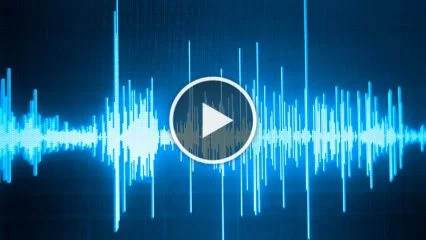HHS Announces Upcoming Audits of CARES Act Funds
This month, the U.S. Department of Health and Human Services (HHS) updated its Work Plan and released a report announcing upcoming audits to CARES Act Provider Relief Funds (PRF) that were disbursed to hospitals and other healthcare providers under HHS’ General Distribution Phases 1, 2 and 3.
The report is more than a reminder to providers about the importance of good record-keeping related to all PRF funding received. The report is also both: (1) a forecasting of tougher post-COVID regulatory crackdowns and scrutiny that will continue to be a major theme for emergency funding going forward; and (2) a warning to providers that increased scrutiny related to the upcoming audit should be taken particularly seriously, given that the guidance from HHS has continuously evolved during the audit period itself and that there remains lingering questions and confusion regarding such guidance.
First, while increased scrutiny for fraud after a national disaster or emergency is not new--the Department of Justice’s Criminal Division (DOJ) formed various disaster-specific task forces as well as coordinated the National Center for Disaster Fraud (NCDF) in 2005 by to investigate, prosecute and deter fraud associated with federal disaster relief programs following Hurricanes Katrina, Rita and Wilma--it is still unprecedented in subject (a pandemic), scale ($178 billion) and breadth (the whole country). For example, Hurricane Sandy, which occurred in 2012, was still being investigated and prosecuted by the DOJ as recently as 2019, according to press releases like this one. Now, the NCDF is also coordinating fraud detection associated with the COVID-19 pandemic, and while there may be some familiarity or precedence for the DOJ’s actions with regional natural disasters, it remains to be seen what type of scrutiny will result from a novel, global-reaching pandemic.
Second, the report heeds a warning to providers that the upcoming audit may be especially worrisome given that HHS has essentially been playing catch up. PRF funding standards, guidance and requirements were issued on an immediate timeline, and many were incomplete. HHS has had to issue updated guidance documents and FAQs in order to address the widespread provider confusion. Still, unanswered questions and confusion remain, which requires providers to self-interpret standards that may fall between “not explicitly permitted” and “not explicitly prohibited.” In essence, it is unknown what the overall impact of the audit standards still being refined during the audit period itself will have on providers.
Provider Relief Funds
As background, PRF payments, appropriated through the CARES Act, provided approximately $178 billion in relief funding to hospitals and healthcare providers for expenses and lost revenue attributable to COVID-19. While statutory language called for HHS’ review prior to the disbursement of PRF funds, HHS largely expended the funds without requiring a formal application or review process.
HHS disbursed the PRF funds via both “general” and “targeted” distribution payments, and allocated the funding to one of three phases:
- Phase 1 included $50 billion for Medicare providers.
- Phase 2 provided $18 billion for Medicaid, CHIP, dental and certain other Medicare providers, as well as assisted living facilities.
- Phase 3 provided $24 billion for certain behavioral health providers, newly practicing providers and providers that received a payment under a previous phase.
Eligibility and spending guidance
Providers that received or accepted PRF funds were expected to have met certain eligibility requirements and other terms and conditions, which included submitting supporting documentation to the Health Resources and Services Administration (HRSA). If such requirements have been met, PRF funds do not need to be repaid; however, non-compliance with any requirement may allow HHS to recoup some or all of the payments made to providers.
HHS states that PRF funds may be used to “cover lost revenue attributable to COVID-19 or health-related expenses purchased to prevent, prepare for, and respond to coronavirus.” This includes, but is not limited to, supplies; equipment; workforce training; reporting of COVID-19 test results to federal, state or local governments; building or constructing temporary structures for COVID-19 patient care or non-COVID-19 patients in a separate area; acquiring additional resources, including facilities, supplies or staffing to expand or preserve care delivery; and developing and staffing emergency operation centers.
Further guidance also states that PRF funds may be used for healthcare-related expenses attributable to coronavirus that are not reimbursed or obligated to be reimbursed from other sources, and may also be applied to lost revenues, up to the difference of 2019 and 2020 actual patient care revenues. Note that there are further reporting requirements, in the form of a more detailed expense breakdown, for providers that received over $500,000 in aggregate PRF payments.
Audits coming soon for PRF recipients
Specifically, HHS’ report outlined that the series of audits will review both revenue information and supporting documentation submitted to HRSA as a part of determining PRF eligibility and payment amounts. Additionally, the audits will seek to determine whether payments were: (1) correctly calculated for providers that applied for these payments, (2) supported by appropriate and reasonable documentation, and (3) made to eligible providers.
Overall, the announcement of the audits stresses the significance of saving and preserving all documentation, records and other data related to all background material used to prepare applications as well as data related to PRF funding and expenditures to fully respond to OIG audits.


